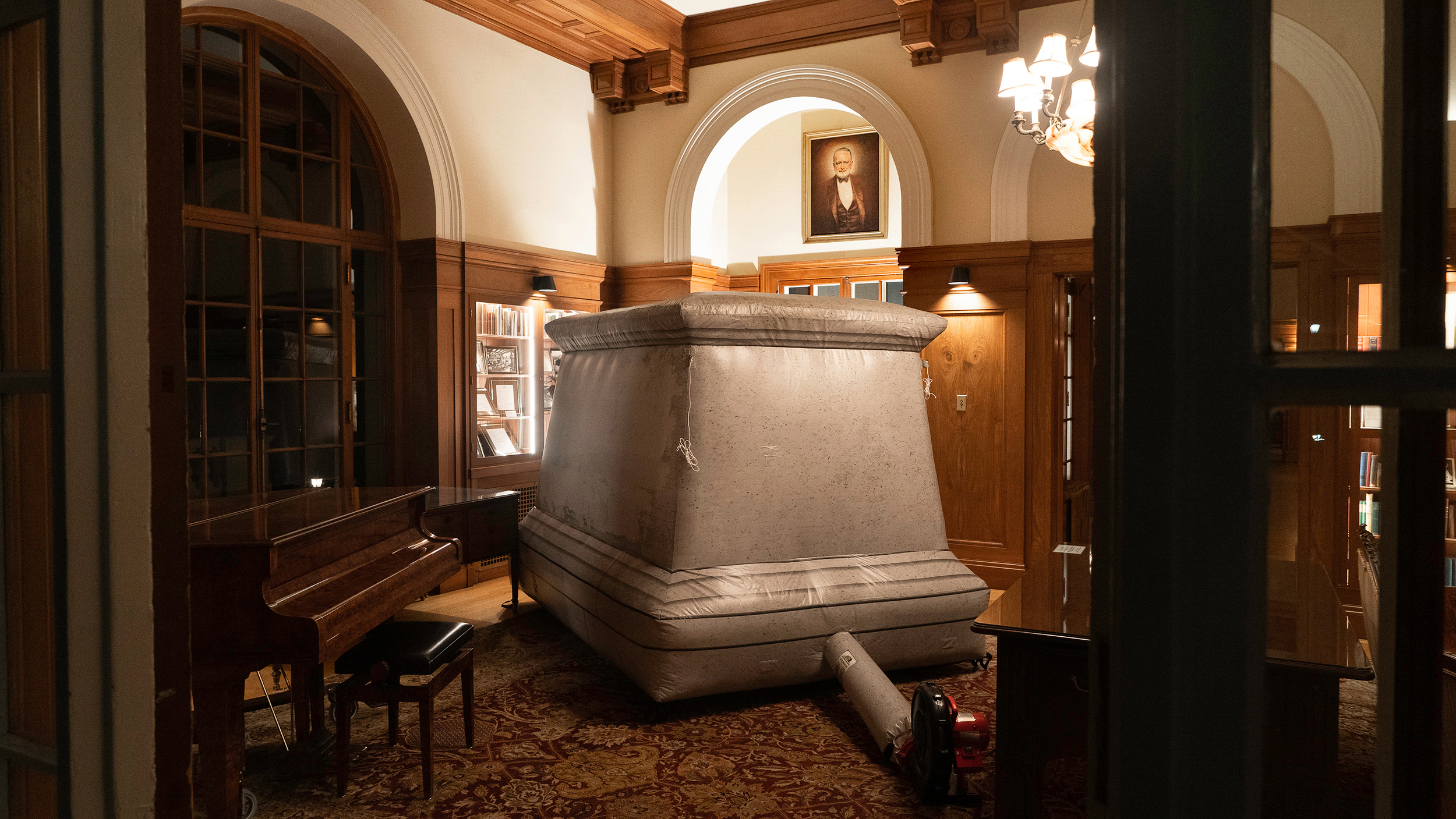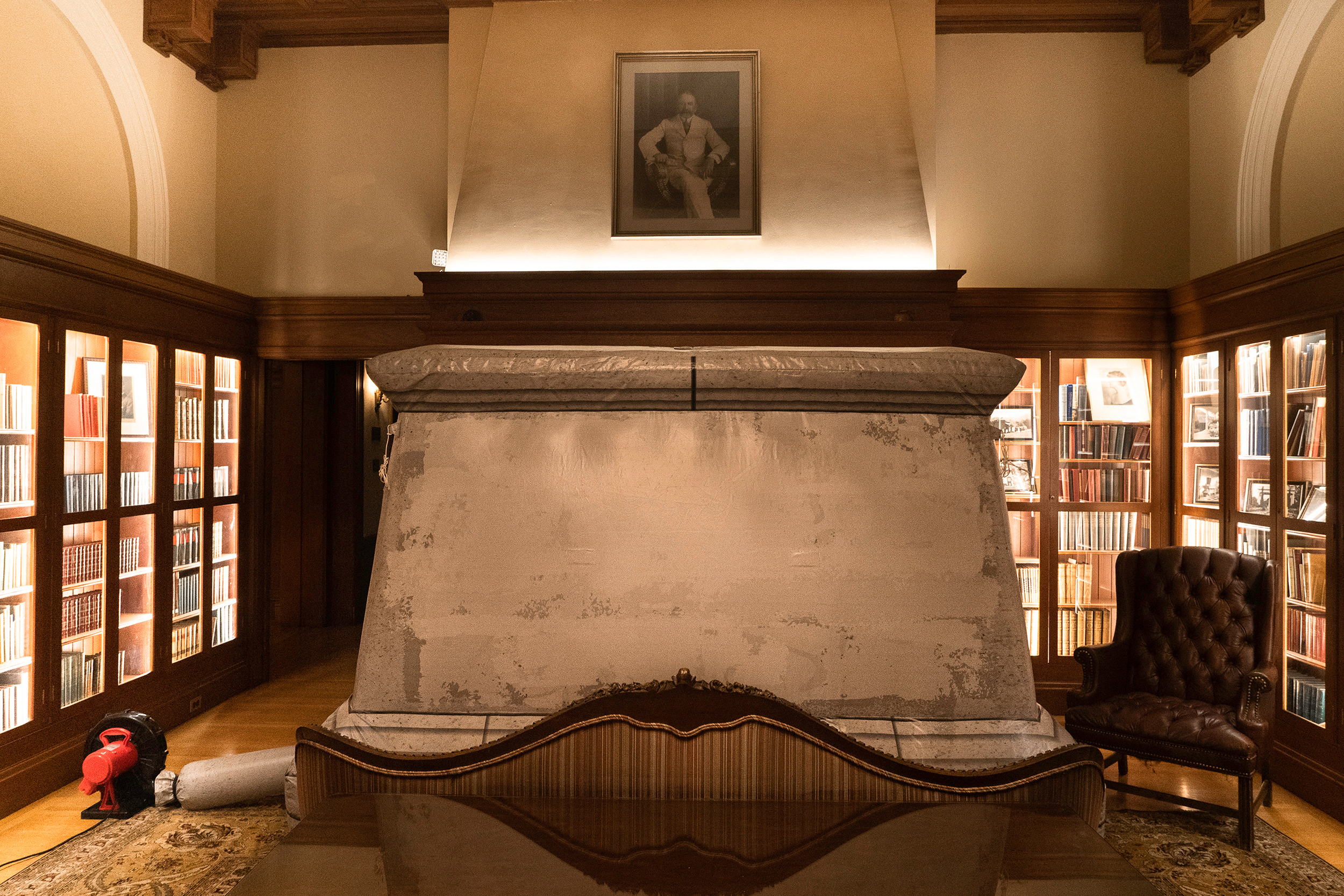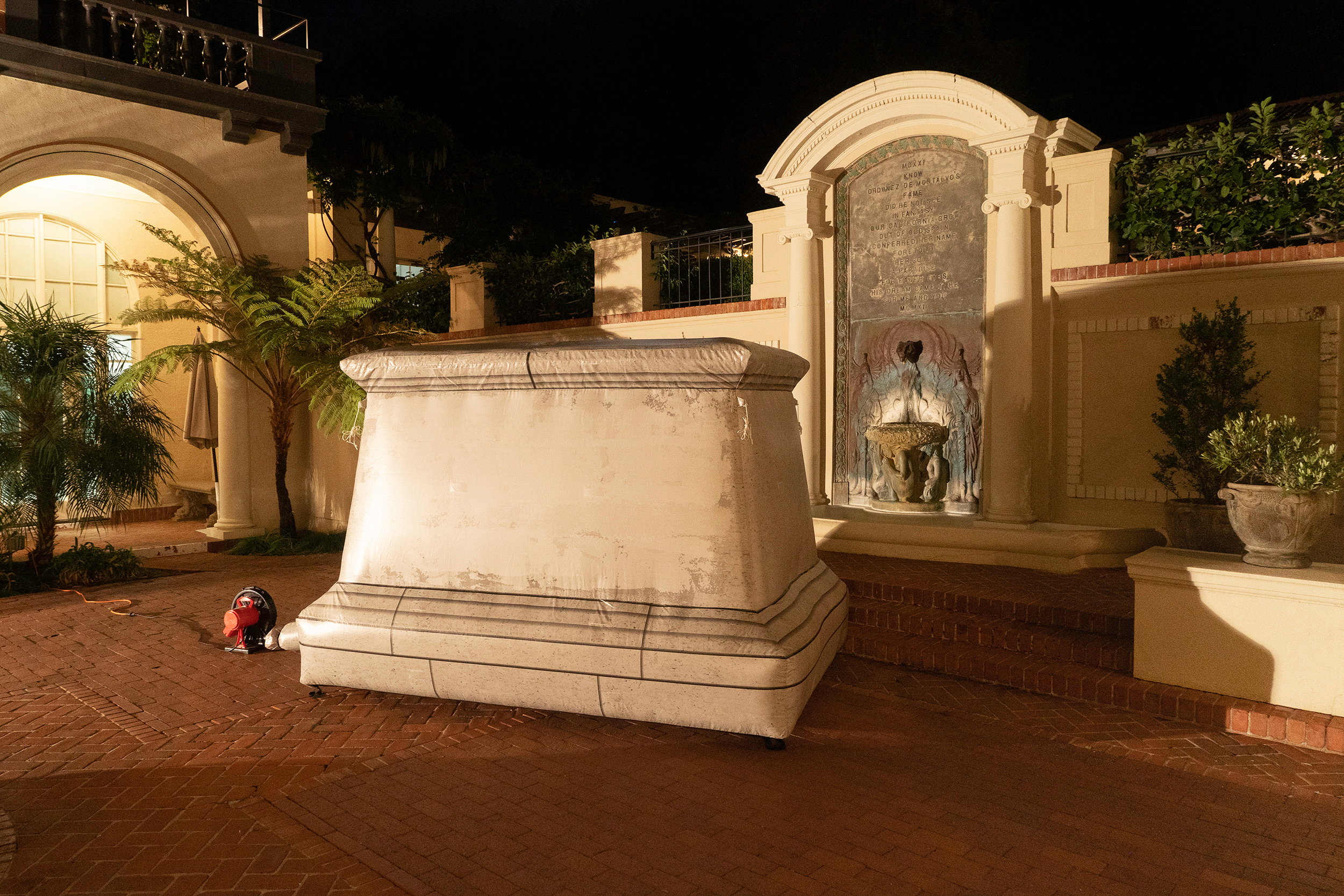(Inflating Agitation)
Related Tactics
36″ x 64″ each
inkjet print
2022
(Inflating Agitation) is a series by Related Tactics (Michele Carlson, Weston Teruya, and Nate Watson) that features an inflatable/deflatable monument base temporarily installed in specific sites that speak to often invisible moments in local community histories, particularly those linked to labor & social justice movements and the wounds of white supremacy. The surface design of the deflatable suggests a plinth marked by guerrilla graffiti during national protests, subsequently painted over in blocky institutional gray–an acknowledgement that even without a figure upon its platform, the object continues to serve as a site for public negotiation and intervention around collective memory, power, and knowledge building.
In this set of photographs, we’ve deployed the temporary marker at Montalvo Arts Center–the former estate of James Phelan, former SF mayor and California Senator and one of the architects of the Chinese Exclusion Act who was as virulently anti-Japanese and white supremacist in his campaign as he was a fervent arts patron. Today, the grounds serve as a multidisciplinary arts presenter, public park, and artist residency (where Related Tactics has had a fellowship), although the painful legacy that enabled the creation of this space is not always apparent. We deliberately leave visible the energy and mechanisms (the blower & generator) that are needed to keep it inflated and activated to acknowledge that unlike a marble edifice, the memory of these histories must be refreshed and tended to, in order to keep the stories alive in public discourse and counteract their potential artwashing.
(Inflating Agitation) is part of Memories Breathe and Every Monument Deflates, a body of work in which Related Tactics examines the mechanisms of history-making: framing devices that disseminate and structure stories of place, cities, and value systems, but are often hidden in plain sight, receding into the background in service of the ideologies they enact. We intervene in these tools–including postcards and photographs, statuary plinths, and cartographic processes–to bring them to the fore, invite questions, and make apparent the ways the systems of knowledge they structure undergird our local and national discourses, regardless of whether they are currently present in the landscape.


